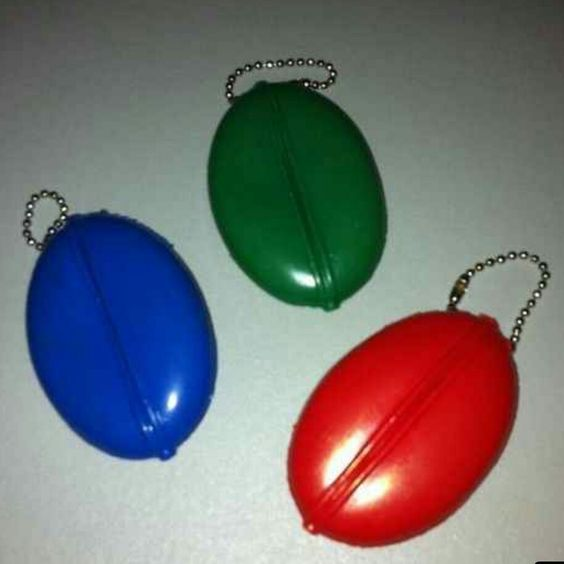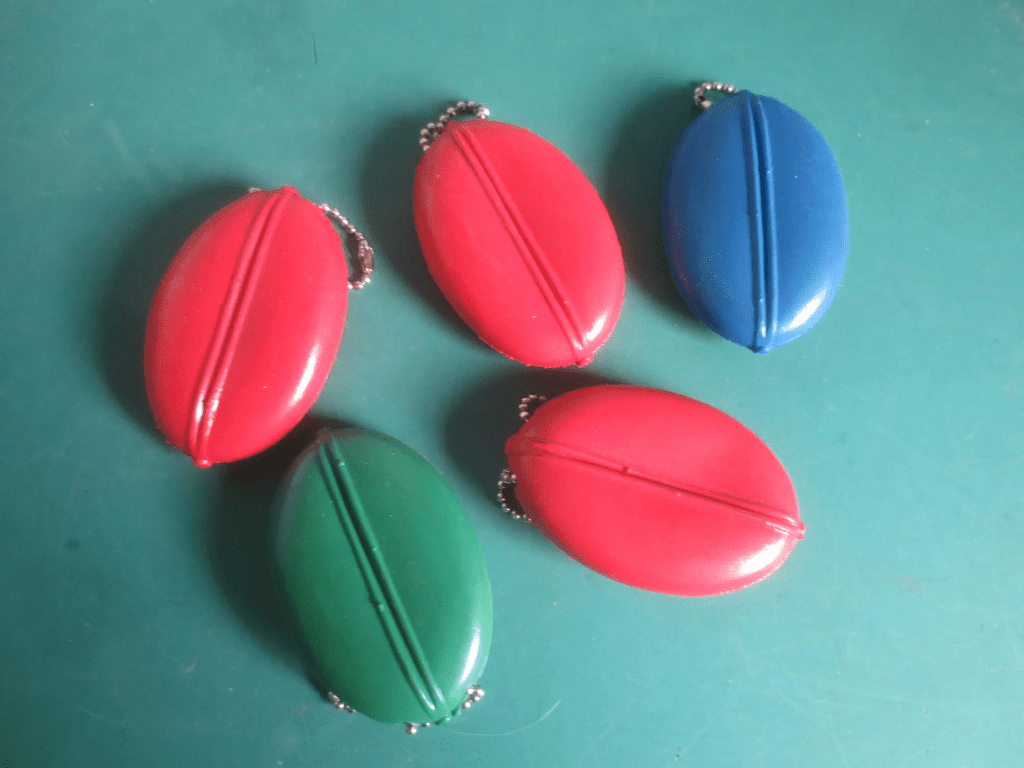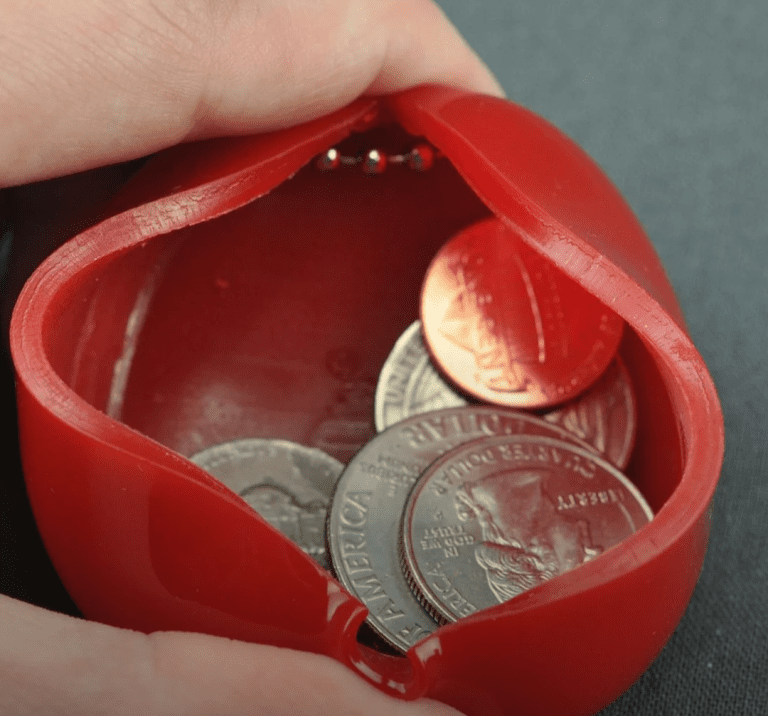In a world where digital payments and contactless technologies dominate, the humble rubber coin purse seems like a relic of the past. Yet, the Quikoin, a palm-sized, oval-shaped coin holder first created in 1951, continues to evoke nostalgia and practicality for users across generations. With its fascinating history, versatile applications, and emotional pull, the Quikoin has managed to carve a lasting legacy in a modern world.
The Origins of the Quikoin: A Post-War Innovation

The Quikoin emerged in the post-war era, a time when small, convenient gadgets were highly valued. Designed by Rex Whistler in 1951, the coin purse was manufactured in Akron, Ohio, by the Quikey Manufacturing Co. Its appeal lay in its simplicity and functionality—a soft, rubber shell that securely held coins, preventing the jingling and jangling that annoyed many.
Businesses quickly saw the potential of the Quikoin as a promotional tool. They emblazoned their logos and messages on its surface and distributed them to customers as practical yet memorable giveaways. By the 1950s and 60s, the Quikoin had become a household staple, with tens of millions produced annually. It was carried by everyone, from shopkeepers to celebrities like Frank Sinatra, who reportedly used one to keep his stage performances silent and smooth.
A Sentimental Connection Across Generations
For many baby boomers, the Quikoin represents more than just a coin holder—it’s a link to cherished memories. Whether it was a grandfather pulling out quarters to treat his grandkids or a shopkeeper handing out change, the coin purse became a symbol of everyday life in simpler times.
As the third-generation leader of Quikey Manufacturing Co., Burns recalls countless stories from customers who hold the Quikoin dear. “When you hand it to a baby boomer, they’ll smile, rub it, or open it and smell it,” Burns shares. “It instantly takes them back to their childhood.”
This emotional connection has made the Quikoin more than just a functional item—it’s a tactile reminder of a bygone era.
The Decline of the Coin Purse in a Digital Age
By the late 20th century, the Quikoin faced significant challenges. The rise of credit cards, electronic payments, and inflation reduced the relevance of coins in everyday transactions. The Quikoin, which could hold about $3 in quarters and dimes, struggled to meet the needs of a society that was moving away from cash.
In 1951, $3 was enough for a substantial purchase, but in today’s economy, its value has diminished significantly. With vending machines, parking meters, and even laundromats now accepting credit cards, the demand for dedicated coin storage waned.
The Quikoin’s Surprising Comeback
Despite its decline, the Quikoin has experienced a resurgence in recent years, with over 2 million units sold annually. What’s behind this unexpected comeback? The answer lies in nostalgia and adaptability.
Reimagining the Quikoin for Modern Times
While originally designed for coins, the Quikoin has found new life through creative repurposing. Users have embraced its compact and durable design, turning it into a multifunctional tool.
Here are some innovative ways people use the Quikoin today:
- Small Accessories Organizer: Perfect for storing earrings, guitar picks, or buttons.
- Discreet Personal Item Carrier: Popular as a condom holder due to its compact and secure design.
- Travel Companion: Ideal for holding foreign currency or subway tokens while traveling.
- Kid-Friendly Piggy Bank Alternative: A fun and easy way for children to carry pocket money.
These modern applications have broadened the appeal of the Quikoin, making it relevant to younger generations while retaining its nostalgic charm for older users.
The Collector’s Craze: Turning Quikoins Into Keepsakes

Beyond its practical uses, the Quikoin has become a sought-after collectible. While the coin purses cost about 70 cents each in bulk, vintage versions often sell for $5-$7 on online platforms like eBay.
Several factors drive this collector’s craze:
- Historical Significance: As one of the top promotional products of the 20th century, the Quikoin holds a unique place in advertising history.
- Custom Designs: Many Quikoins feature logos and slogans from long-gone businesses, transforming them into nostalgic time capsules.
- Rarity: Limited edition designs or those tied to specific events are particularly desirable among collectors.
For enthusiasts, collecting Quikoins is more than a hobby—it’s a way to preserve a piece of cultural history.
The Quikoin’s Role in Advertising History
The Quikoin’s legacy isn’t just tied to its practical use; it’s also a testament to the power of promotional products. Named one of the top five promotional items of the 20th century by the Promotional Products Association International, the Quikoin joined the ranks of branded pens, tote bags, and keychains as an iconic marketing tool.
Its success stemmed from its blend of utility and branding potential. Companies could provide customers with a functional item while embedding their logo into everyday life, ensuring long-lasting visibility.
Adapting to a New Marketplace

Today, the Quikoin continues to adapt to the changing market. Quikey Manufacturing Co. has expanded its product range to include rubber keychains, luggage tags, and ID holders. However, the Quikoin remains their flagship product, thanks to its rich history and ongoing popularity.
Sold entirely through distributors, the Quikoin has also found a place in modern promotional campaigns, proving that even niche products can find relevance when paired with creativity and emotional appeal.
Why Nostalgia Sells: The Emotional Pull of the Quikoin
The Quikoin’s revival underscores the power of nostalgia in marketing. For baby boomers, it’s a tangible link to their childhood—a time when coins were a daily necessity and life felt simpler. For younger generations, it’s a quirky, retro accessory that offers a break from the monotony of digital convenience.
By bridging these generational gaps, the Quikoin demonstrates how emotional connections can breathe new life into seemingly outdated products.
Conclusion
The Quikoin rubber coin purse is far more than a tool for holding change—it’s a symbol of ingenuity, adaptability, and nostalgia. From its post-war origins as a practical household item to its modern resurgence as a versatile accessory and collectible, the Quikoin continues to captivate audiences across generations.
Whether you remember it as a childhood staple or discover it as a vintage treasure, the Quikoin stands as a reminder that timeless design and emotional resonance can outlast even the most cutting-edge technologies. In a world dominated by digital trends, the Quikoin proves that sometimes, the simplest things leave the most lasting impressions.


